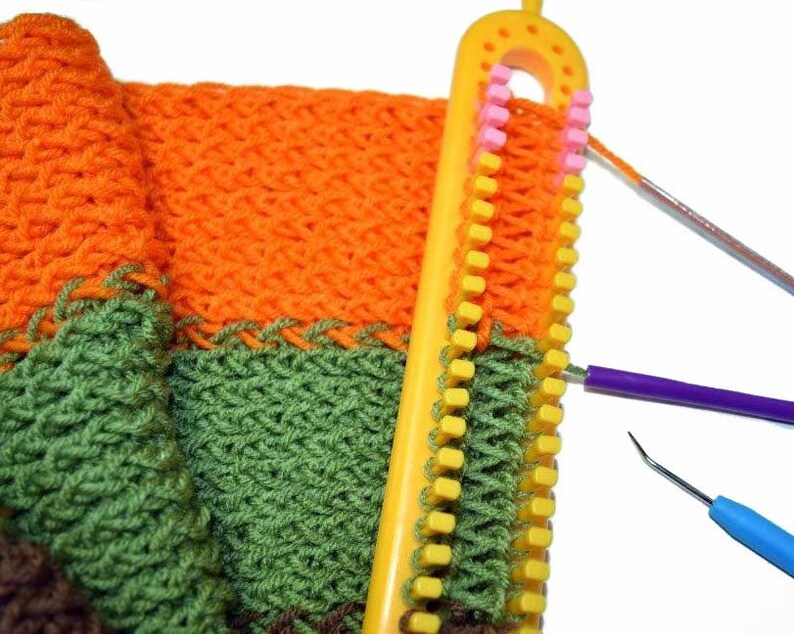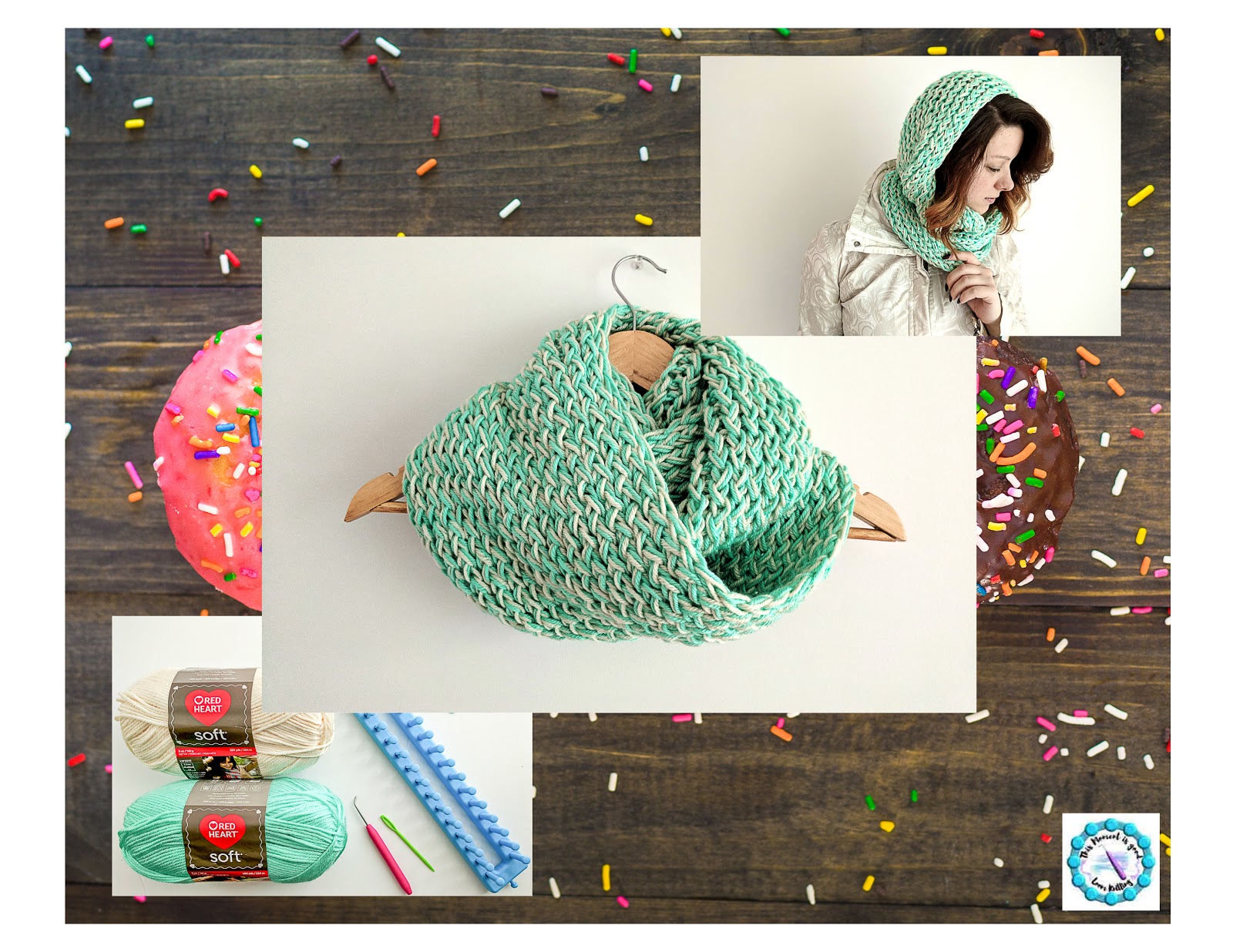

Continue hooking over all stitches until there is only one stitch left on each pin. Using your hook tool, hook the bottom stitch over the top stitch and pin, leaving one stitch left on the pin. You’ll now have two stitches on each pin. Lay a long piece of yarn down the center of the board. Once you reach the end, turn your board and continue wrapping the empty pins until all are wrapped: Then wrap your yarn to the front 2nd pin and continue back to front every other peg: To cast on, start with with a slipknot and place on the first pin on the back board. Since these are a bit more pricey, you may want to consider waiting for one of those awesome 50% off coupons at Michael’s or Jo-Ann’s when deciding to purchase! Casting On These can also be found at your favorite craft store as well as at the Authentic Knitting site and Amazon. The beauty of these is that the width is adjustable, depending on the weight/thickness of the yarn you will be using for your projects, which allows for more flexibility in the projects you choose to work on. Wooden looms, such as this one from Authentic Knitting, also come in a variety of sizes. The downside is that you cannot adjust the width of the loom which allows for smaller stitches when using lighter weight yarn.

These are great to learn on and create larger-stitched projects such as scarves and blankets using medium weight yarn (and above). Plastic looms come in a variety of sizes, are pretty economical on your budget and are easily found at any craft store as well as Amazon. There are plenty of choices when choosing a rectangular loom, however, some looms are more versatile than others. For “double-knit” technique, there just aren’t that many dedicated sites or basic how-to’s for beginners, so I thought I’d shed a little light.

There are a plethora of sites and how-to videos dedicated to the “single-knit” technique – just do a Google searchor tap into Pinterestand you’ll find plenty. Loom Knit Central focuses on the “ double-knit” technique. When you use both sides of the rectangular loom, you are using the “ double-knit” technique. When using one side of the rectangular loom, you are also using the “ single knitting” technique. When using a round loom, you are using the “ single knitting” technique. There are different types of looms: round looms as well as rectangular looms. As Loom Knit Central continues to grow with a variety of content covering patterns, stitches and how-to videos directed at established double-knit loom knitters, I thought I’d step back and address those who may be new to double-knit loom knitting.


 0 kommentar(er)
0 kommentar(er)
